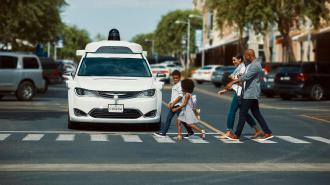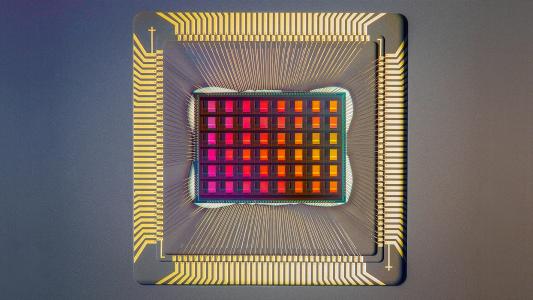The dream of roads filled with fully autonomous vehicles is, in the end, about safety. Properly trained and tuned AI will take human error, like driver fatigue and DUIs, out of the equation.
But despite the autonomous trucks taking to the road and ride services being rolled out in Las Vegas and the Valley of the Sun, that dream of safer, fully automated vehicles zipping around in perfect harmony is still further down the distant pike — if it arrives at all.
In the meantime, especially in new cars, drivers now operate in a kind of liminal space between “let the car drive itself” and bearing full responsibility for each action these fast-moving tons of steel take.
Automated driving features can have the knock-on effect of increasing driver fatigue and distraction.
Automated driving systems like Tesla’s Autopilot, smart cruise control, steering and parking assistance, and highway lane assists mix human drivers with a suite of quasi-autonomous options.
“We’re in an in-between phase at the moment,” Colin Barnden, a market analyst with automotive industry advisory, consulting, and research firm Semicast Research, told the Los Angeles Times in 2021.
And that in-between phase, despite its safety features, has its own unique dangers.
Enhancing driver fatigue: Maybe you’ve felt it, especially on interminably long stretches of road, like I-90 between Buffalo and Chicago — vast expanses, flat as a shuffleboard, where any kind of turn is begged for; the white line fever sets in, heavy eyelids and asphalt fever dreams.
Out there, it is easy to fall prey to driver fatigue, with no vibrations through your pedal thanks to cruise control, no furtive glances in the mirrors thanks to warning systems, no taps against wind and alignment thanks to lane assist, nothing that demands your attention — until it does.
All of these new features, which make cars more convenient to drive and provide, in some ways, an extra layer of safety, can have the knock-on effect of increasing driver fatigue and distraction.
“Research indicates that monotonous automated driving increases the incidence of fatigued driving,” researchers from the University of Michigan, the University of Wisconsin, and Ford Motor Company Research and Advanced Engineering wrote in a research paper.
Especially in new cars, drivers now operate in a kind of liminal space between “let the car drive itself” and bearing full responsibility for each action these fast-moving tons of steel take.
Fighting driver fatigue: That finding is backed up in a new report from Waymo, a sister company of Google, that is developing driverless cars.
But, as Waymo’s lead safety researcher Francesca Favaro told Axios, the best answer won’t be found at the bottom of a coffee cup.
Instead, the company is proposing the autonomous vehicle industry adopt a “systematic fatigue risk management framework” that will take on monitoring, preventing, and mitigating the driver fatigue with autonomous (and semi-autonomous) driving systems.
Their proposed approach can be broken down into five big buckets: education on driver fatigue risk; voluntary and mandatory reporting, awareness, and self-assessment; real-time driver fatigue monitoring; adaptive scheduling to help employers keep tired drivers off the road; and “supplemental engagement.”
That last one is the one you’re most likely to encounter day to day. This could include something like pushing a button every so often.
And if that fails and driver fatigue sets in, the Insurance Institute for Highway Safety (IIHS) recommends an escalating scale of warnings.
This includes a visual reminder first; a kind of blinking “hey!” If the driver fails to respond, IIHS suggests an audible reminder, or a physical one, like seat vibrations. If that doesn’t work, they suggest using all three, then all three with pulsed braking, then, if all else fails, the car popping its hazards on, coming to a stop, and locking the driver out of further action.
Some new cars have versions of these systems — sensors that monitor if hands are on the wheel, or eyes are open and on the road, but some reports find that they vary in quality and consistency.
Developing better driver fatigue solutions could play an important role in making our transition to a driverless future as safe as possible.
A driverless future: Waymo became aware of driver fatigue almost a decade ago, at the beginning of their autonomous vehicle research, Axios reported; volunteers often showed signs of distraction and fatigue, even when told they had to pay attention.
Waymo’s eventual solution is to move to full automation, which they see as safer. But before that day happens, developing better driver fatigue solutions could play an important role in making our transition to a driverless future as safe as possible.
We’d love to hear from you! If you have a comment about this article or if you have a tip for a future Freethink story, please email us at [email protected].






